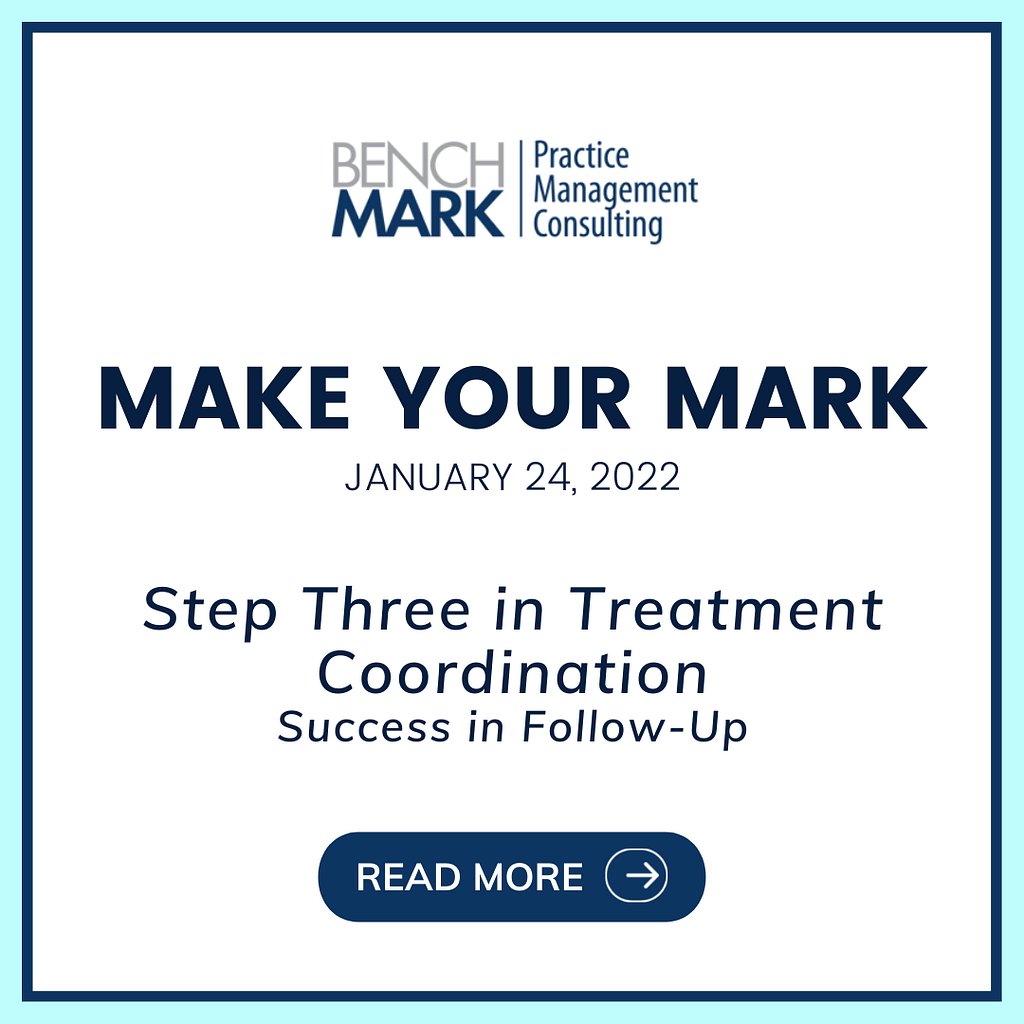In many offices, you will find that approximately 40% of patients will book their major restorative on the day that it was diagnosed if you have followed protocols similar to those discussed in the first two parts of this series. The toughest part is how to book the remaining 40% of patient diagnoses’ once they have left the office, to meet the industry metric of 80% booking at first diagnosis.
There are several different techniques that you can employ to reach this metric. Sometimes it will take a combination of all of these techniques to book a treatment or it could just be a simple phone call. It depends on the person doing the follow-up as much as the patient who is being contacted.
If the patient doesn’t book at their appointment departure, then let them know who will be following up with them and when. Ensure that this information is entered into the computer detailed right down to the reason that the patient mentioned that they weren’t booking at the time. These reasons could include checking their schedule, checking with someone at home or looking at their finances. Having this reason entered into your software will allow you to remain connected with the patient when you follow up with them. Keep these follow-up calls entered into a calendar so that your office is seen as doing what they say they are going to do; this builds trust with the patient.
When re-connecting with a patient as a follow-up call, determine if it will be more effective with a Zoom call, a phone call or another in-person office visit. Unless it is a very complicated case many patients won’t want to return to the office for a follow-up on treatment diagnosed. By knowing your patient’s style of communication, you can decide if a phone call or a Zoom call is most appropriate. If you choose a Zoom call, have ready in advance any models that can be used for demonstration, radiographs or financial documents that can be used with screen sharing. The team member making contact with the patient should be well versed and able to recreate the communication with the patient in the same verbiage that they heard at the initial diagnosis.
Very often during this call is when your team member may hear about financial concerns from the patient. This conversation will go smoothly if the team member is able to provide options for payment for major restorative cases. If you get creative in your thinking, there are many variations of payment options that your office can provide without causing a cash flow problem in the office. To many patients, this is a customer service aspect of the practice just as important as the care they receive.
This contact point with the patient may also bring in many insurance questions which will need to be answered in ways to show the patient the value of the treatment and be delivered with positivity. Have your team member prepared with verbiage in advance that will address this inevitable question. Two tips: Use the world diagnosed instead of recommended when speaking with the patient and when speaking about insurance, talk about insurance being a possible supplement for payment.
Determine a pattern for these follow-up discussions with the patients. A good plan is to connect with patients three weeks after initial diagnosis, then once a month after that for three months. As always keep track of notes around these discussions in a common place for all team members to be able to access to keep the communication lines open.
For the dentist, during monthly core meetings, there should be discussions about treatment that had been diagnosed that was not booked and where the office is in the follow-up procedure. This will necessitate developing a type of electronic monitor that can be easily shared. Have monthly discussions around treatment will also provide accountability for the team member responsible for follow-up.
In the final discussion around Treatment Coordination, we will cover the delivery of treatment and how to ensure that the patient leaves the office feeling proud of their decision to proceed with the diagnosed treatment.




